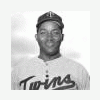Steinbach in '96. How Do You Explain It?
Twins Video
I was watching the excellent ESPN 30-for-30 feature on the Earthquake Series of 1989 and in recalling various players on that Oakland A’s team, was again struck by how far off the charts Terry Steinbach’s 1996 was from any other season in his career at the advanced-for-baseball age of 34. Steinbach slugged 35 homeruns that season after never hitting more than 16 before or after. His 34 homeruns as a catcher (the other was as a pinch hitter) was the highest total for a catcher at that time in the American League. It was surpassed by Ivan Rodriguez (35) in 1999 which is the current record.
In all of baseball history, only two other players over age 30 put up career high homeruns exceeding 30 in a season which more than doubled any other season homerun total in their careers.
Brady Anderson – hit 50 homeruns in 1996 at age 32. The next highest HR total for Brady in a season was 24.
George Crowe – hit 31 homeruns in 1957 at age 36. The next highest HR total for George in a season was 15.
Crowe hit his 31 homeruns in the only season he ever topped 400 at-bats so is easily explainable. Brady Anderson and Steinbach, not so. While steroid rumors have always surrounded Anderson’s aberrant 1996, Steinbach’s similarly aberrant 1996 has remained unquestioned as far as I can tell from Google searches despite the Oakland clubhouse of 1996 also being the home to McGwire, Canseco and Giambi.
So how exactly does a 34 year-old catcher who never hit more than 16 homeruns before or since become the all-time single season league leader in homeruns at his position? In looking for explanations, I thought of the following:
Renovation to the Oakland Coliseum
In 1995-1996 the Oakland Coliseum was renovated to enclose the previously open outfield with a massive steep double-decked grandstand for Raiders football. (”Mt. Davis”) Prior to that, the stadium had a symmetrical curved outfield fence with dimension of 330 down the lines, 375 to the alleys, and 400 to center field. With the construction, the configuration of the outfield changed to a peaked diamond shape that kept the same foul line and center field dimensions but was constrained to shorter dimensions in the alleys.
A’s fans have also written that there was previously a breeze that cooled the ballpark on hot day games that disappeared once Mount Davis was erected. This suggests that batters no longer had to deal with wind blowing in. Shorter power alleys and more favorable wind conditions could have helped Steinbach’s power numbers, right?
Steinbach hit a home run every 38 at-bats at home in 1994, every 21 at-bats in 1995, and every 16 at-bats in 1996, while the rest of the A’s hit homers every 36 at-bats in 1994, every 30 at-bats in 1995, and every 24 at-bats in 1996 – so the park (or the team) was trending upward. Unfortunately for the ballpark theory Steinbach’s rates on the road were a homer every 36 at-bats in 1994, every 36 in 1995, and every 13 at-bats in 1996, meaning his homerun rate increased 32% at home in '96 but increased 164% on the road! Not the ballpark.
The Strike of 1994-1995
Steinbach lost at-bats that would have affected his overall homerun totals in 1994 and 1995. The 1994 season was wiped out after 117 games and the 1995 season started late and was limited to 145 games. Perhaps his aberrant 1996 power wouldn’t be as glaring in comparison if his two previous seasons had been completed. Projecting his production in those seasons to 1996 at-bat levels produces only 14 homeruns in 1994 (compared to 11 actual) and 19 instead of 15 in 1995. (For some reason the jump from 19 to 35 seems less staggering even though it’s still semi-staggering – especially given Steinbach’s age. Joe Mauer had his aberrant HR season at age 26, by the way.)
Sold his Soul?
With the lack of a better explanation, it’s possible Steinbach negotiated some kind of deal with Lucifer in exchange for his 1996 season. How else could you explain how following the greatest season of his career and one of the top seasons ever for an American League catcher, he inexplicably took two-thirds of his previous salary to join a moribund team Twins team that lost 90 games every season for the rest of his career.
- Willihammer, chamoman and Paul Pleiss
-
 3
3







5 Comments
Recommended Comments